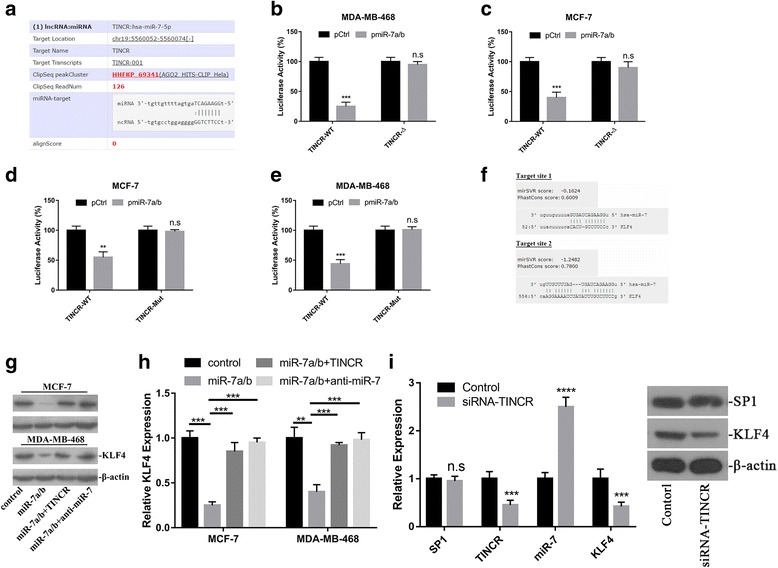Fig. 5.

TINCR functioned as endogenous competing lncRNA against miR-7 to regulate KLF4. a The prediction of miR-7 seeding region in TINCR transcript using Starbase online tool. b, c Luciferase reporter assay was performed to validate the regulatory effect of miR-7 on TINCR. Either wild-type or putative binding site deleted TINCR was fused to luciferase plasmid, which was co-transfected with miR-7a/b into MDA-MB-468 and MCF-7 cells. ***p < 0.001, n.s: no significance. d, e Luciferase reporter assay was performed to validate the regulatory effect of miR-7 on TINCR. Either wild-type or putative binding site mutant TINCR was fused to luciferase plasmid, which was co-transfected with miR-7a/b into MDA-MB-468 and MCF-7 cells. **p < 0.01, ***p < 0.001, n.s: no significance. f The putative target sites of miR-7 in KLF4 3’UTR by microRNA online tool. g miR-7 negatively modulated KLF4 expression, which was antagonized by TINCR. Exogenous scramble, miR-7 a/b, TINCR or anti-miR-7 were transfected into MCF-7 (left) and MDA-MB-468 cells in combination as indicated, the relative expression of KLF4 was determined by immunoblotting. β-actin served as loading control. h The relative expression of KLF4 was measured by real-time PCR in indicated cells. **p < 0.01, ***p < 0.001. i The SP1-TINCR-miR-7-KLF4 axis was analyzed by q-PCR (left pane) and western blotting (right pane) in xenograft tumor. n.s: no significance, **p < 0.01, ***p < 0.001
